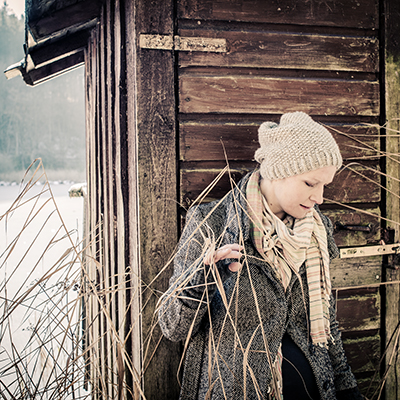This essay about the Waldorf Puppet Play was featured by Donni from The Magic Onions. Thank you, Donni for inviting me!
Especially in the fast pace of our time, where children can be overwhelmed with quickly changing pictures and impressions and add to that the extensive media consumption, puppet play, as carried out in Waldorf education, with its calming rhythm and continuity, can not be valued high enough.
Stories that are presented to children on TV often contain fast changing pictures and scenes, that will confuse their mind as well as their senses, whereas the simplicity and calmness of puppet play allows the children to follow the story, step by step. It stimulates their fantasy and strengthens their life forces. Looking at the development of the young child, the unfolding of their senses, puppet play is clearly a natural continuation of storytelling and fingerplays are appropriate for the youngest as well as for school starters.
Although the following might sound like a lot of rules to follow, you will feel that it is all very natural to implement and with a bit of practice, puppet play can become a beautiful and important part of life with your own children or in a playgroup.
Simply put, puppet play is usually a rhyme or fairy tale that is accompanied by puppets, moved by the story teller, who is sitting visibly behind the scene while telling the story to the audience.
Necessary preparations: The scenery and the figures need to be arranged. The simplest scenery is often the best — simple offers a scope for the childrens‘ imagination.
When preparing the play, one can choose to do it by oneself or to involve the children, either by letting them watch or even help with the preparations. Children love to participate and when they see the scenery evolve, their imaginations are sparked and they feel motivated to create their own play later on. In any case, the process of building up the scene should be thoughtful and affectionate, the figures being placed or hidden at their starting point in the story. Now the stage might be carefully hidden under an additional piece of silk and revealed when the play starts.
The stage: The scenery should be at the eye level of the audience, which means a small bench or table serves well, but the floor can be just as practical. The children sit in front or in a semicircle around the scene. If possible, the story teller who is sitting behind the scene should be wearing clothes that won’t attract too much attention — light and plain-colored.
Colored silk or cotton cloths are often used to simulate the landscape of the story.
These at hand, green clothes can make for meadows, blue ones for the lake, pond or river, brown and gray are suitable for wood or mountains.
Natural materials, brought home from outdoor adventures, that are also used for nature tables, like stones, roots or cones can make for trees, walls, rocks etc.
Often a little lantern is lit and placed near the scene.
Figures/People and Animals: These can be very simple as well, leaving room for the childrens imagination. Simplest of all are puppets made from silk clothes just by adding a few knots.
Figures made of felt are wonderful, even more so, when the children have been involved in making them. The puppets can be plain white or colored, they don’t even have to have a face. By listening to the story the childrens minds will add character by themsleves.
The story: If one is new to puppet play, one should choose a short story or simple rhyme that is easy to remember, so one does not have to read off the paper. If that should be necessary, because the story is longer, a second person, sitting next to the stage can slowly read out the story, while the other one is moving the figures around the stage.
For the youngest, simple rhymes are most appropriate, the rhythm often being more important than the content. For older children one can choose ever more complex stories, like „The Shoemaker and the Elves“, „Sweat Porridge“, „Mashenka and the Bears“, later „Mother Holle“, „Rumpelstiltskin“ or the like.
10 to 15 minutes is enough for small children. The stories should not be longer than 25 minutes even for schoolchildren.
Narrative style: Calmness and serenity are a must, no dramatization is needed. The voice of the narrator should be calm. The figures are to be moved carefully, no jumping or jolting. If it is necessary to change from one hand to the other this should be done slowly.
Music: Before, after or during the puppet play a little song can be sung, or a piece of music can be played on the chimes, harp or flute, to get in the right mood.
Repetition: As is equally true for storytelling, children will ask for the same play over and over again. They will be happy listening to the same story for days and weeks. To answer this need for repetition is important for their development. The program does not have to be changed very often.
Honestly, you should not feel overwhelmed or pressured by these basics. In fact, you should just go ahead and try the activity and see what feels right for you and the children! I truly hope that you find it a pleasant addition to your life with children!



1 Kommentar schreiben
[…] Zuge einer Waldorf-Fortbildung zum Thema Puppenspiel, über das ich mal für The Magic Onions eine Zusammenfassung schreiben durfte, haben wir vor ein paar Wochen noch gelernt verschiedene Tierfiguren aus Filz zu […]